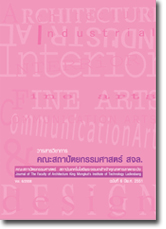การเปลี่ยนแปลงทางวัฒนธรรม ของเมืองทาลินน์ ประเทศสาธารณรัฐเอสโตเนีย
Main Article Content
Abstract
บทคัดย่อ
บทความนี้เป็นการเสนอสาระเบื้องต้น เพ่อวิเคราะห์ข้อมูลในการศึกษา เรียนรู้ พื้นฐานการเปลี่ยนแปลงทางสังคม และวัฒนธรรม (Culture change and Social change) ของยุคโลกาภิวัตน์ ว่ามีการเปลี่ยนแปลงหรือคงอยู่ในรูปลักษณะใด เป็นที่ทราบกันอยู่แล้วว่า การเปลี่ยนแปลงเป็นเรื่องธรรมดาที่จะต้องเกิดขึ้นอยู่เสมอ โดยลักษณะของตัวธรรมชาติที่มีผลโดยตรงกับมนุษย์ทุกสังคมทุกเผ่าพันธุ์เวลาที่เปลี่ยนไปนั้น จึงทำให้บุคลิกภาพ องค์ความรู้ แนวความคิด ประสบการณ์ ของคนแต่ละสังคมยอมปรับตามสภาพกาล เมื่อมีการเปลี่ยนแปลงมนุษย์ทุกๆ คนในสังคมก็มีการคิดสร้างสรรค์ ปรับตัวให้เหมาะสมตามสภาพแวดล้อมพื้นถิ่นฐานที่เกิดขึ้น และมีผลต่อการกระทำปรับเปลี่ยนพฤติกรรมสร้างบรรทัดฐาน ประเพณี และวัฒนธรรมใหม่ๆ ขึ้นมา เมืองมาลินน์ ประเทศสาธารณรัฐเอสนโตเนีย จึงเป็นตัวอย่างอีกประเทศหนึ่งในทวีปยุโรปที่มีความคล้ายคลึง และแตกต่างกันหลายๆ ด้าน
คำสำคัญ : การเปลี่ยนแปลงทางวัฒนธรรม การแพร่กระจายการติดต่อทางวัฒนธรรม ความทันสมัย และนวัตกรรม
Abstract
The paper explains basic principles for data analysis of “Culture change and Social change” in globalization, which changes or exists to what/some characteristic of social form. The changed is normally always been in natural condition which is directly affected to ass socials and races. People in all communities have to apply themselves to fit into social changes and time conditions. The changing of time is formed individuality, knowledge, conceptual notion, or experience to people in each community. When the change comes, people in society have created or adapted themselves to fit in an environment and this affect to social change in human behavior, norm, tradition, and new culture, This paper shows the case of culture change in Tallin Town, the Republic or Estonia, which is one of one of the unique countries that has similarity and contradiction of culture in Europe.
Keywords: culture change, invention, discovery, diffusion, acculturation, modernization, innovation
Article Details
This work is licensed under a Creative Commons Attribution-NonCommercial-ShareAlike 4.0 International License.
Copyright Transfer Statement
The copyright of this article is transferred to Journal of The Faculty of Architecture King Mongkut's Institute of Technology Ladkrabang with effect if and when the article is accepted for publication. The copyright transfer covers the exclusive right to reproduce and distribute the article, including reprints, translations, photographic reproductions, electronic form (offline, online) or any other reproductions of similar nature.
The author warrants that this contribution is original and that he/she has full power to make this grant. The author signs for and accepts responsibility for releasing this material on behalf of any and all co-authors.


